Leatherjacket
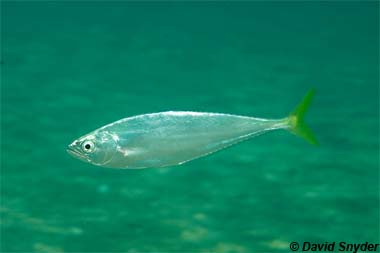
Oligoplites saurus
This elongated, silvery fish usually grows to about 10 or 11 inches long, and often has a blue-green or yellow sheen. This game fish should be handled with caution because the spines at its dorsal and anal fins can deliver significantly painful venom.
Order – Perciformes
Family – Carangidae
Genus – Oligoplites
Species – saurus
Common Names
English language common names are leatherjacket, leather jacket, leathercoat, leatherjack, mackerel, needlejack, runner, shoemaker, and zapate. Other common names include cacana (Spanish), carangue plate (French), carpin (Spanish), caspin (Spanish), cavaco (Portuguese), chaqueta de cuero (Spanish), cuchillo (Spanish), cueriduro (Spanish), gaivira (Portuguese), goivira (Portugese), guaibira (Portuguese), guaivira (Portuguese), guajuvira (Portuguese), guaravira (Portuguese), guarivira (Portuguese), guavira (Portuguese), hudiu (Papiamento), huelva (Spanish), jamuche (Wayuu), kal (Creole/French), macarela (Spanish), meona (Spanish), monda (Spanish), palometa (Spanish), pamparrona (Portuguese), perrito (Spanish), perritos (Spanish), perritp (Spanish), piña sietecueros (Spanish), quiebra-hacha (Spanish), salteira (Spanish), sauteur (French), sauteur cuir (French), sierrita (Spanish), siete cuero (Spanish), siete cueros (Spanish), solteira (Portuguese), tibiro (Portuguese), tibiri branco (Portuguese), tiburo (Portuguese), voladora (Spanish), voladora mascapalo (Spanish), zapatero (Spanish), zapatero de mar (Spanish), zapatero ligerito (Spanish), zapatero siete cueros (Spanish), and zapatero sietecueros (Spanish).
Danger to Humans
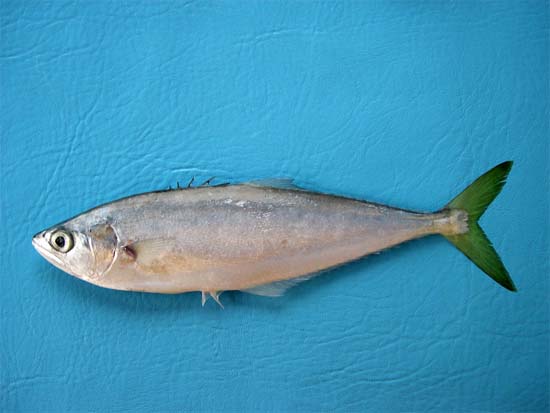
The dorsal and anal fin spines are connected to venomous glands and can inflict painful wounds so caution should be used when handling this species. Little is known about the properties of this venom.
Importance to Humans
Leatherjackets are of only minor commercial importance; however it is considered a gamefish and is utilized as bait occasionally. It is taken in seines, trawls, traps, and gills nets but not selectively fished. Although this fish is typically not consumed by humans, it is edible and has a mildly oily taste similar to that of Spanish mackerel. It is sold fresh in some Central American and South American markets.
Conservation
The leatherjacket has not been evaluated by the World Conservation Union (IUCN). The IUCN is a global union of states, governmental agencies, and non-governmental organizations in a partnership that assesses the conservation status of species.
Geographical Distribution
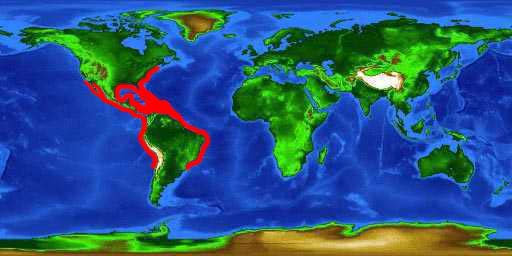
Within the western Atlantic Ocean, the leatherjacket can be found from Maine (US) to the northern Gulf of Mexico, south to Uruguay including most of the West Indies. This species is notably absent from the Bahamas. In the eastern Pacific Ocean, it resides from Baja California (US) and Mexico south to Ecuador.
This species has been divided into two subspecies: Oligoplites saurus saurus (western Atlantic) and Oligoplites saurus inornatus (eastern Pacific). However, molecular studies are still needed to confirm these subspecific taxonomic rankings.
Habitat
The leatherjacket is found in inshore waters, typically along sandy beaches, inlets, and bays. It sometimes enters estuaries and other freshwater bodies and prefers turbid conditions. Leatherjackets for large, quick moving schools that are often observed leaping out of the water. Juvenile leatherjackets have been reported floating at the surface with heads down and bent tails in a “leaf-mimic” type of position.
Biology
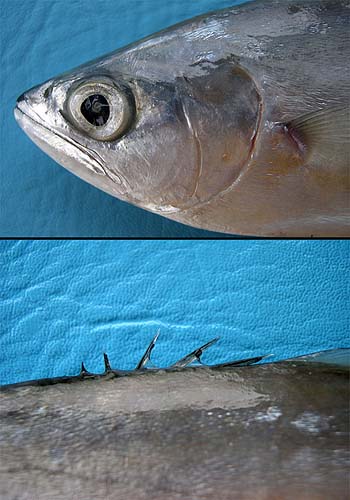
Distinctive Features
The body is strongly compressed and elongate. The posterior portion of the upper jaw reaches the rear edge of the eye and the snout is moderately pointed. The eyes are small. The dorsal and anal spines are connected to venomous glands. The bases of the anal and second dorsal fins are approximately equal in length. The pectoral fins are shorter than the length of the head. The caudal peduncle is slender with an inconspicuous keel on each side. The lateral line is slightly arched over the pectoral fin and straight afterwards with small scales imbedded in the skin. The skin is corrugated with numerous short longitudinal ridges giving this fish a leathery appearance, from where it gets the common name “leatherjacket”.
This species can be confused with the longjaw leatherjack (Oligoplites altus) which has a longer jaw extending behind the eye and the shortjaw leatherjack (Oligoplites refulgens) in which the jaw terminates before the pupil of the eye.
Coloration
The leatherjacket has a blue-green dorsal surface, with silvery to white flanks and belly occasionally with 7-8 irregular broken silvery bands and white interspaces along the sides. Some individuals may also have yellowish highlights and the lower belly and cheeks. The dorsal fin spines are dusky or dark with translucent membranes. The second dorsal and anal fins are typically clear but may have dusky markings on the lobes. The caudal fin and pectoral fins are clear to yellowish in color.
Dentition
Juveniles have outwardly-hooked spatulate teeth and as the fish matures and there is a change of diet, the teeth become conical in shape. Adult leatherjackets have small teeth with two closely spaced rows in the upper jaw containing teeth that are irregular in the outer raw and smaller anteriorly. The lower jaw has two rows of conical teeth at lengths of longer than 16cm fork length.
Size, Age, and Growth
The maximum reported length of the leatherjacket is 13.8 inches (35 cm) total length (TL), although this species is more commonly observed reaching 10.6 inches (27 cm) TL. The maximum published weight is 10.1 ounces (287 g).
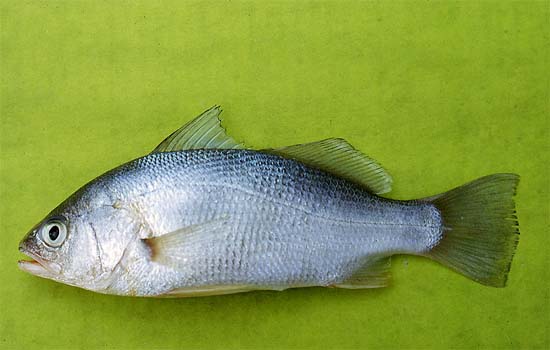
Food Habits
The diet of the adult leatherjacket consists of small fish including silver perch (Bairdiella chrysoura), Irish mojarra (Diapterus auratus), and anchovies. This carangid also feeds on shrimps and mysids as well as macroalgae (found in gut contents). Juvenile leatherjackets feed on ectoparasites and fish scales through cleaning activities of other fish such as the redfin needlefish (Strongylura notata).
Reproduction
The leatherjacket spawns in shallow inshore waters from early spring to midsummer.
Predators
Larger fish including sharks are potential predators of the leatherjacket.
Parasites
The isopod Cymothoa spinipalpa has been documented as a buccal cavity parasite of the leatherjacket. Other reported parasites of this species include the metazoan Metacamopia oligoplites n. sp. found on the gill filaments and the trematode Tergestia pectinata.
Taxonomy
The leatherjacket was originally described as Scomber saurus by Bloch & Schneider in 1801. This name was later changed to the currently valid Oligoplites saurus (Bloch & Schneider 1801). Synonyms referring to this species in past scientific literature include Oligoplites inornatus Gill 1863 and Oligoplites saurus inornatus Gill 1863. Refer to the “Geographical Distribution” section below for information regarding subspecies of Oligoplites saurus. The Carangidae family includes jacks, pompanos, jack mackerels, and scads. There are approximately 151 species in 30 general within this family of fishes.
Prepared by: Cathleen Bester